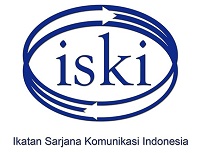Roles Mapping in Tribal Conflict Reconciliation: A Study of West Kalimantan Dayak and Madurese Case
Abstract
Keywords
Full Text:
PDFReferences
Alexandra, F. (2014). Analisis Efektifitas Resolusi Konflik Sampit Pada Tahun 2001. Yogyakarta: Universitas Gajah Mada.
Arkanuddin. (2005 ). Menelusuri Akar Konflik Antaretnik di Kalimantan Barat. Mediator Vol 7 No 2, 185-195.
Barnlund, D. C. (1970). Language Behavior:A Book Of Readings In Communication. The Hague: Mouton.
Bloomfield, David & Barnes, T. (2003). Reconciliation After Violence Conflict: A Handbook, Stockholm: International Institute for Democracy and Electoral Assistance.
Cresswell, J. W. (1998). Qualitative Inquiry and Research Design Choosing Among Five Tradition. California: Sage Publication.
Davidson, J. S., & Kammen, D. (2002 ). Indonesia's Unknown War and the Lineages of Violence in West Kalimantan. Indonesia No 73, 54.
DeVito, J. A. (1997). Komunikasi Antarmanusia (The Interpersonal Communication Book). Professional Book: Jakarta.
Dila, S. (2005 ). Simbolisasi Etnik Muna di Bandung:Studi Identitas Etnik Orang Muna. Mediator Vol 9 No 2, 317-326.
Karomani. (2005 ). Studi tentang Pengelolaan Kesan Elite Lokal Umaro terhadap Jawara dan Ulama di Banten Selatan. Mediator Vol 9 No 2, 351-358.
Moleong, L. J. (1993). Metode Penelitian Kualitatif. Bandung: Remaja Rosdakarya.
Muhadjir, N. (2000). Metode Penelitian Kualitatif. Yogyakarta: Rake Sarasin.
Mulyana, D. (2000). Ilmu Komunikasi Suatu Pengantar . Bandung: Remaja Rosdakarya.
Mulyana, D. (2001). Metode Penelitian Kualitatif. Bandung: Remaja Rosdakarya.
Peluso, N. L., & Harwell, E. (2001). Territory, Custom, and Politics of Ethnic War in West Kalimantan, Indonesia. In N. L. Peluso, & M. Watts, Violent Environment (p. 86). New York: Cornell University Press.
Smith, C. Q. (2012). The roots of violence and prospects for reconciliation : a case study of ethnic conflict in Central Kalimantan, Indonesia. Retrieved from www.agris.fao.org: http://agris.fao.org/agris-search/search.do?recordID=US2012411029
DOI: https://doi.org/10.29313/mediator.v10i2.2734
Refbacks
- There are currently no refbacks.

This work is licensed under a Creative Commons Attribution 4.0 International License























